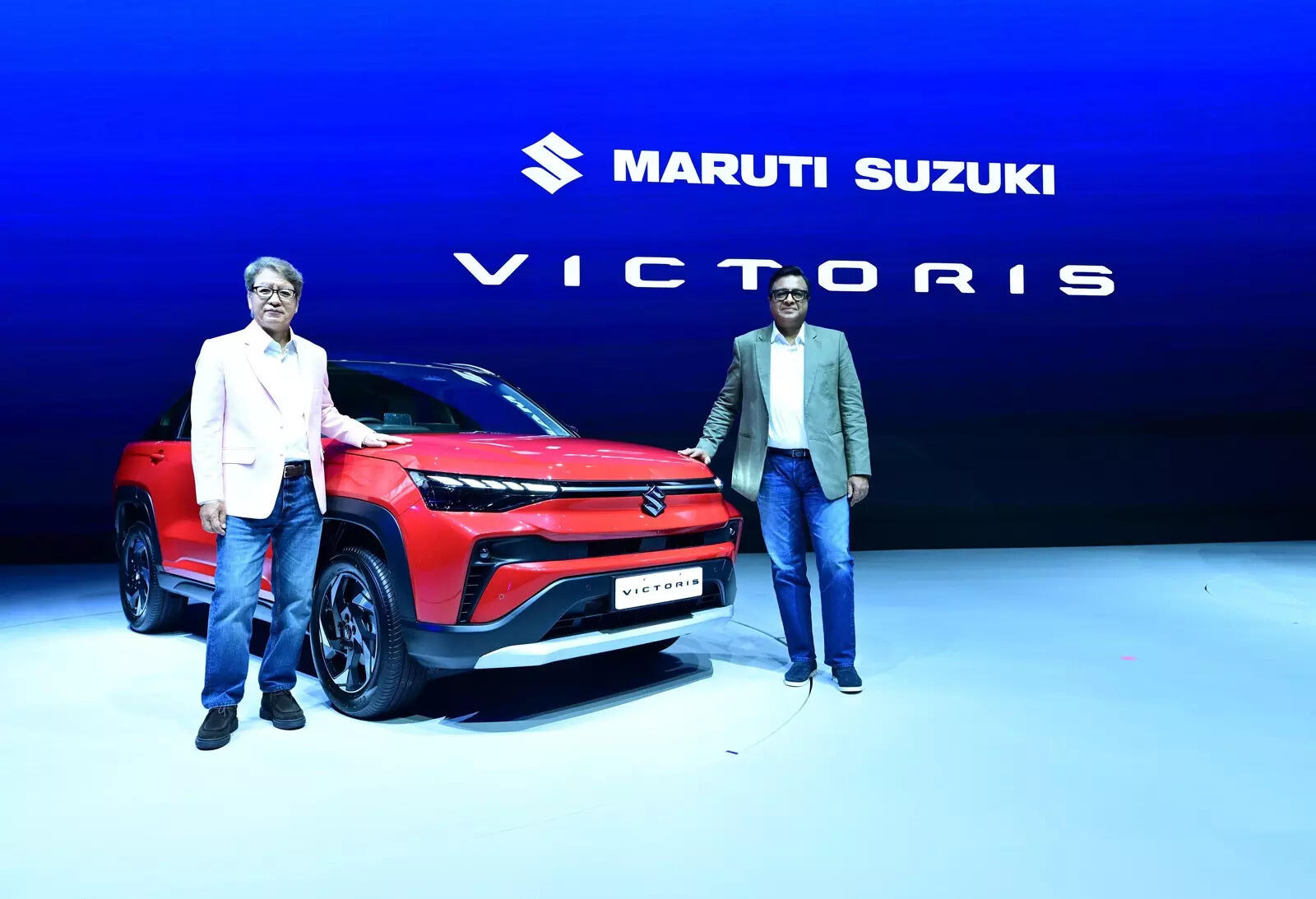
“/>
Maruti Suzuki has been rather late to the SUV party as competitors raced ahead and the category exploded these last few years. But now that Maruti has begun to buckle up, there is no holding it back. The company unveiled its mass market, mid-Sized SUV Victoris today and internal discussions have already begun on bringing in a new product in the premium end of the SUV market too. Maruti has no presence in the premium SUV space as of now.
We have to have one (an SUV longer than 4.5 meters). We are talking about it.Hisashi Takeuchi
MD & CEO Hisashi Takeuchi said “we have to have one (an SUV longer than 4.5 meters). We are talking about it.” As per current classification, any SUV less than four meters in length is called an entry level or micro, over four meters but under 4.5 meters is mid-sized and longer than 4.5 meters is premium. Also read:
Maruti swears by its ‘multi powertrain’ approach as competitors bank on EVs
In fact, Maruti has changed its tune somewhat, from always singing paeans to the small car to now harping on the fast growing SUV market. When asked whether the company is now shifting focus away from small cars and whether it will bring any new products in the shrinking small car space, Takeuchi said “we like small cars and we will continue to introduce new small cars but the SUV segment cannot be ignored. We have to be number one in SUVs too…We are developing new models for small cars but our priority now is the SUV segment…the key to increase overall market share is our success in the SUVs”.
SUV leadership a long haul
Maruti claims leadership in the micro or entry level SUV sub-segment but is well behind the market leader in mid-sized SUVs and absent from the premium end of the market. While Takeuchi asserted that the company will strive for leadership in the entire SUV pie, it may not be an easy ride. Ramnath E, Team lead at automotive advisory Market&Markets, had noted earlier that Maruti’s share in the mid-sized SUV space with the Grand Vitara was 19-20% in FY25, behind the 30-31% share of Hyundai with Creta while Kia’s Seltos was at 10-12% share.
We like small cars and we will continue to introduce new small cars but the SUV segment cannot be ignored. We have to be number one in SUVs too…Hisashi Takeuchi
So the Victoris has its task cut out, in not only muscling into a category which is already crowded with well entrenched leaders but in also now trying to usurp the pecking order. Cannibalisation of the Grand Vitara is inevitable after Victoris, though Maruti officials denied any such possibility citing the marked difference between the two SUVs. The Grand Vitara is positioned as a premium product, retailed through the premium Nexa distribution channel while the Victoris is aimed primarily at the tech savvy young buyer.
Also read:
Hatchbacks and sedans continue to shrink as Hyundai races ahead with SUVs, banks on Creta EV as game changer Anyway, a long time Maruti dealer said the Grand Vitara faces tough competition from Japanese major Toyota due to its pricing while another analyst, who has been closely tracking the automobile sector, said he expected the Victoris to be priced “aggressively” and positioned “sharply”. The Victoris, which will be available in petrol, CNG and hybrid options, will be retailed through the company’s Arena distribution channel.
A company official said that the positioning of the new SUV has been done to ensure a much wider distribution – Arena accounts for about 70% of Maruti’s sales while the premium channel Nexa accounts for just 30% – and pricing of the Victoris will also be “competitive” . This official said that it is likely that at least one variant of Victoris will be priced below the Rs 10 lakh mark. Prices of the Victoris range will be revealed before the first Navratra begins late this month, he said.
Tilt away from small cars
In FY25, the Utility Vehicle (UV) segment continued to grow at a scorching pace, accounting for 65% share of the entire passenger vehicle market. In other words, two in three passenger vehicles sold in the domestic market last fiscal were UVs. This is a big leap from the 21% share of UVs a decade back. This trend has continued in FY26 as well, with the small car segment shrinking further. Maruti has been championing the small car cause, pushing for lower GST rate on these cars (which are less than 4 metres in length and have engine displacement of either 1200 petrol or 1500 cc diesel) and seeking easier emission norms for this category.
Also read:
First time buyers going straight for Venue, Creta: Hyundai
According to data from their respective annual reports for 2024-25, Mahindra & Mahindra (M&M) reported UV volume surge by a fifth or nearly 20% and its market share in SUVs increased by more than two percentage points to 22.5%. Hyundai’s domestic SUV sales grew by 11.4% year-on-year last fiscal while Tata Motors’ UV sales also grew by 11.4%, with the entry SUV Punch becoming India’s number one SUV in FY25. In the same period, Maruti said that its share of SUVs in its domestic sales climbed to 28% from 25%. So while Maruti is the largest car maker by sales volume, it lags competitors in the SUV space and it is this lag which ought to get addressed somewhat through the Victoris.
Suzuki shifting export focus to India
Takeuchi also emphasised that Victoris will be exported to a 100 countries besides selling in the domestic market. And this was part of the Japanese parent Suzuki Motor Corp’s attempt to make the Indian operations a key manufacturing and export hub for its global product portfolio. This shift is valid for both, small cars and SUVs. Maruti has already started exports of the eVitara electric SUV and India will serve as Suzuki’s primary export base for electric and other vehicles.




